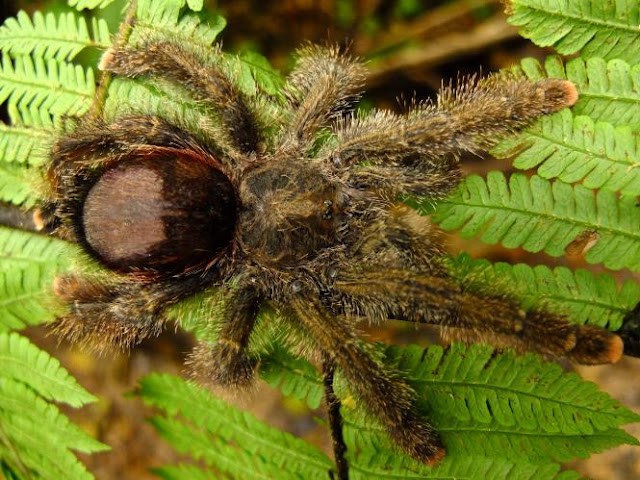Greetings
everybody! HAPPY FRIDAY! Friday comes so quickly, hope everyone is has had a
good week. We know you've been looking forward to the weekend and especially
this post! Enjoy.
Gigantopithecus is an extinct genus of ape that is thought to have existed from around nine million years to one hundred thousand years ago. Probably the closest thing to a real King Kong it was alive at the same time as early humans. They are also the largest apes that ever lived, with heights of up to 3 meters, and weighing a massive 540 kilograms.
Gigantopithecus is an extinct genus of ape that is thought to have existed from around nine million years to one hundred thousand years ago. Probably the closest thing to a real King Kong it was alive at the same time as early humans. They are also the largest apes that ever lived, with heights of up to 3 meters, and weighing a massive 540 kilograms.
Despite the popular belief that once a brain cell is
killed it is gone forever, in the early 90s, scientists identified
neural stem cells which are self-renewing and mulit-potent cells (cell that can produce two or more different types of differentiated cells) that generate new neurons. In 1998 it was found that
the human hippocampus (an area of the brain responsible for short-term
memory to long-term memory and spatial navigation) retains the ability
to generate neurons throughout life.
Dark chocolate is known for its vast benefits. Dark
chocolate contains more of the original cocoa bean than milk chocolate
does and cocoa is a fabulous source of flavonoids (a class of plant
secondary metabolites). One benefit is that it contains 19 percent of
the US RDA for iron, while an ounce of beef sirloin only contains 3
percent! Just to be precise here are the standard references from USDA
National Nutrient Database: 70-85 percent cacao solids, value per 100
grams is 11.90 milligrams of iron. While beef, bottom sirloin, tri-tip
roast, separable lean and fat, trimmed to 0% fat, all grades, roasted,
value per 100 grams is just 1.66 milligrams of iron! This does not mean
you should run to your nearest supermarket and grab some dark chocolate.
Chocolate bars can contain more than 20grams of saturated fat, which is
way too great for consumption daily.
A DNA lab in Scotland found that everyone who carries
one of 3 variants of the red-hair gene is a direct descendant of the
first redhead ever to have it. Two of the variants were introduced in West
Asia around 70,000 years ago, and a inferior variant originated in
Europe around 30,000 years ago. Most carriers of the red hair gene
variants don’t actually possess red hair themselves and may not realize they
carry it.
Homosexuality refers to sexual attraction, sexual
behavior or romantic attraction between members of the same sex or
gender. In the animal kingdom, homosexuality is quite ordinary and many
exercise same gender sex to deal with conflicts. Homosexual behavior has
been observed in over 1500 species of animals and is well documented
for 500 of them. It would be daunting to provide you with a list of 1500
species but here are a few: Pygmy Chimpanzee, Giraffes, Sheep, Black
Swans, Gulls, Mallards, Ibises, Penguins, Vultures, Amazon Dolphins,
American Bison, Bottlenose Dolphins, Elephants, Monkeys, Japanese
Macaque, Lions, Polecat, Dragonflies and others.
Thank you for stopping by. Hope you have
enjoyed this weeks Friday facts segment! Would you like us to mention a fact in
next week Friday facts? Make sure to leave a comment and come back for more
articles!!
BioBunch.
Over and out.
BioBunch.
Over and out.











































